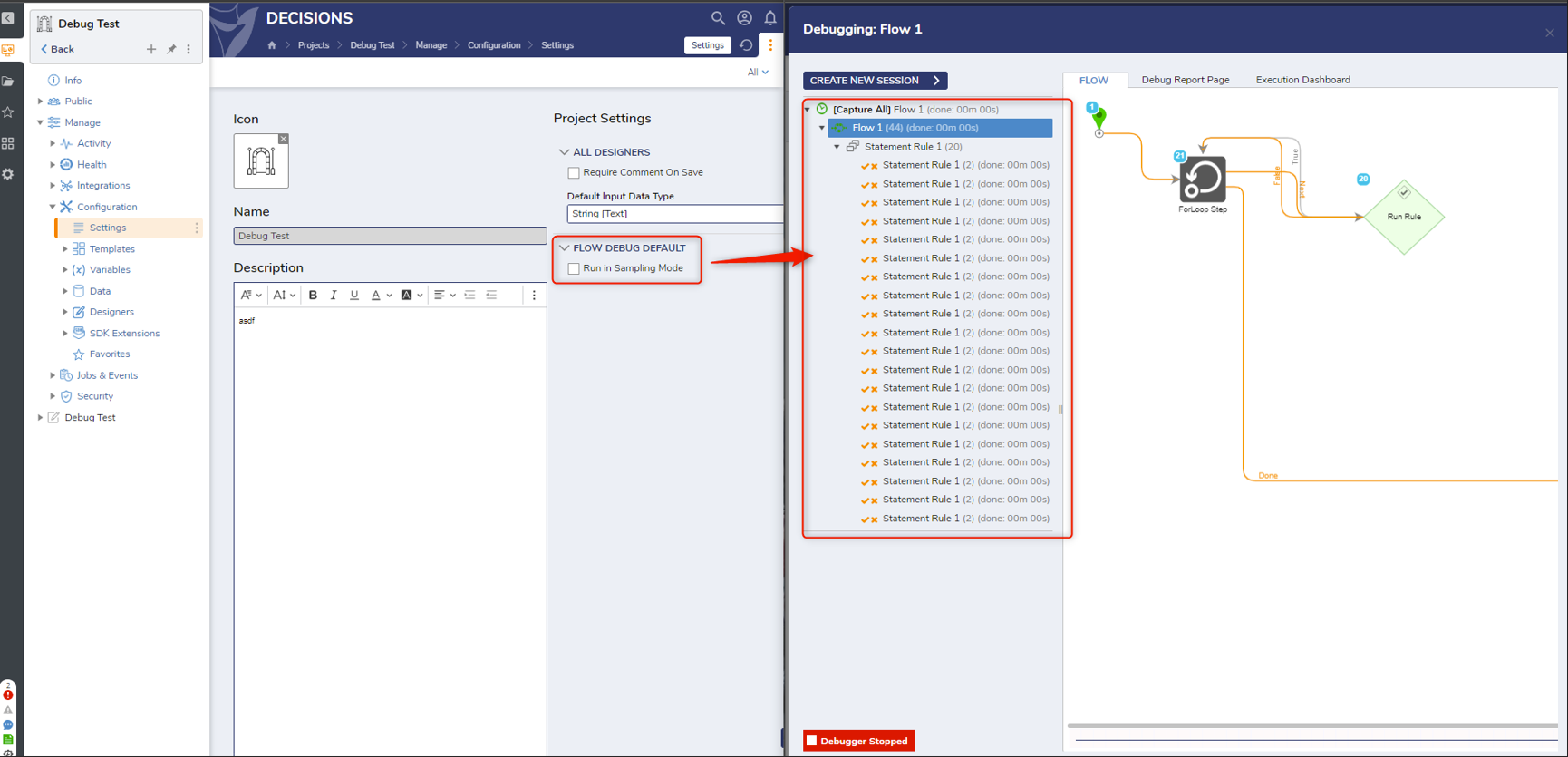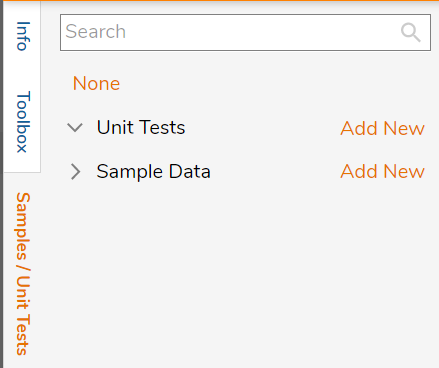- 26 May 2025
- 3 Minutes to read
- Print
- DarkLight
Using the Flow Debugger
- Updated on 26 May 2025
- 3 Minutes to read
- Print
- DarkLight
Overview
The purpose of the Debugger is to ensure a Flow runs without errors. The Flow Debugger can be used to view how data transforms in the Flow and can be accessed from the Flow Designer. Because the Debugger runs Flows with additional processes to display contextual data for developers, the Debugger should not be used to gauge a Flow's performance.
Accessing the Flow Debugger
The Flow Debugger can be accessed by clicking Debug on the top action bar of the Flow Designer.

Starting the Flow Debugger
When the Debugger opens, there is a large START DEBUGGING button that will initiate the debugging process with the default settings. Expanding the OPTIONS section will display additional configurations such as running a Debug and Profile, Debug Only, or Profile Only session.
Refer to the article Troubleshooting Using the Profiler to learn more about Debug and Profile sessions.
In addition, the debugging test can Run in Sampling Mode, which reduces the size of the data set by debugging only a sample of the data. This can ultimately help with performance when larger data sets are being used for testing. The last option is to Capture as Sample Data, which can be used to capture and store the debugging data as simple data.
Sampling Mode:
By default, the Flow Debugger, Unit Tests, and Sample Data are set to run in "Sampling Mode." In Sampling Mode, the Debugger records the data for only five out of all the iterations it is supposed to run. It captures the data of the first two and last three iterations, respectively. This helps reduce memory consumption and makes the debugger faster.
Starting in version 9.11, users can configure the sampling value and run the Flow in sampling mode for 5 to 100 iterations.


Project-level Sampling Mode Setting
Starting with v9, a new project-level setting called Flow Debug Default has been introduced. Under this setting, there is a checkbox labeled Run in sampling mode. If this is enabled, the debugger will continue to use only a sample of the data during debugging, as previously described. However, if this setting is disabled, the debugger will use all available Flow data rather than just a sample. This enhancement provides greater flexibility in processing data during debugging, allowing teams to choose between faster, memory-efficient sampling or comprehensive, full-data debugging based on their project needs.
The images below illustrate the difference between debugging with sampling mode enabled and disabled.
 Run in Sampling Mode Enabled
Run in Sampling Mode Enabled
 Run in Sampling Mode disabled
Run in Sampling Mode disabled
Running the Flow Debugger
After starting the Flow Debugger, there will be three tabs: FLOW, Execution Dashboard, and Debug Report Page (selecting the Debug and Profile option will display an additional tab called Profile Page.
Flow Step Info and Data
Clicking on the steps within the Flow provides the ability to view that step's Input Data, Output Data, and Step Info by selecting Execution 1.

Sub Flows and the Debugger
Sub Flows can be viewed within the Debugger. They appear underneath the Flow on the left side of the screen. Clicking on the name of the Sub Flow will show its steps on the right.

Debug Report Page
The Debug Report Page provides a simple Report of the steps within the Flow.
The Execution Dashboard
The Execution Dashboard provides a snapshot of the executed Flow. The tiles on the left-hand side display the Total Time it took for the Flow to execute, the Number of Steps, the Number of Flows, the Number of Rules, and the Number of Exceptions. This Execution Dashboard is displayed as a Report but can be viewed in a different form by clicking Change Report.

Remember to the Recent List
Setting the Remember to the Recent List checkbox in the Edit Designer Settings window to true will save the current run in the Debugger in the Data Samples back in the Flow Designer.
This default option can be turned off and on in System > Settings > Designer Studio Settings, under the FLOW DEBUG DEFAULT category.

After the Debugger runs and Remember to the Recent List is set to true, the run will be saved in the Samples/Unit Tests panel in the Designer. Under Sample Data > [Flow Name] there will be the saved version of the previously run Debugger. Each time the Debugger is run and this option is on, it will save a new Sample Data that can be Debugged again. The magnifying glass will show what input was used for that run and the save icon will allow the ability to save that run as a Unit Test or Data Sample.

Feature Changes
| Description | Version | Release Date | Developer Task |
|---|---|---|---|
| Added the "Flow Debug Default" project-level setting to control sampling mode during debugging. | 9.1 | May 2024 | [DT-040239] |
| Added the ability to control the sample size while debugging | 9.11 | May 2025 | [DT-044281] |

